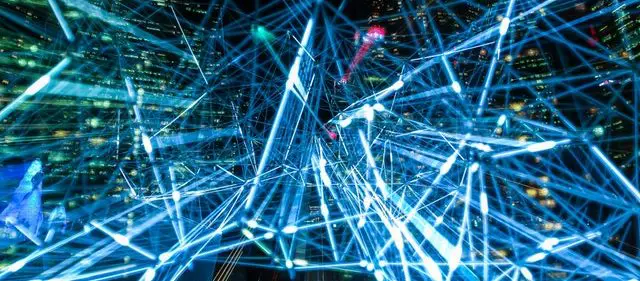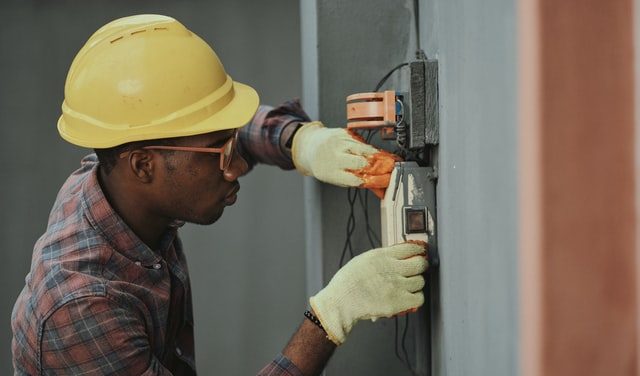With continuous improvements of buildings and new IoT technologies, the amount of information retrieved from sensors and management systems is increasing more and more. This includes data about energy consumption and supply, occupation, lighting conditions, air conditions, maintenance, … and much more.
In order to have a clear focus on what is happening inside large and complex buildings, there needs to be a system in place that can represent the internal and external components in real-time. This is where digital twins come into place. In the following sections, we will take a deeper look into the connection between smart buildings and digital twins, and their importance for decision making as well as sustainability.
What is a Smart Building Digital Twin?
A Smart Building Digital Twin is a virtual representation of a physical building that can analyze IoT data in real-time, collected from various types of sensors. AI and machine learning software can then process this information in order to make automated, strategic and efficient decisions regarding energy, occupation, maintenance and safety.

How does it work?
The 2D or 3D model of the smart building digital twin only works by having access to real-time data from sensors, as well as information about the building in general.
This information will be captured by IoT sensors and will also be entered during the planning and construction phase. If new technologies will be built into the smart building or there will be changes of spaces, these additions can be added to the existing digital twin.
After collecting all the necessary data, it now needs to be put into context with the visualization software. The information needs to be in a well-sorted database that enables the digital twin to further work with it.
Artificial Intelligence (AI) and machine learning (ML) are able to find patterns and inconsistencies in the operation data of a building. These technologies are able to predict malfunctions of devices, occupancy, and energy consumption and thus help to make buildings more efficient.
What are the benefits?
- Better Building Insights
Smart building digital twins are able to support strategic decisions on operating a building by providing better insights. This includes more detailed information on its general structure, operating costs, energy consumption, safety, and more. - Predictive Maintenance
Thanks to the IoT and sensors which are placed at strategic positions throughout the building, as well as on devices, maintenance can be made more efficient. Artificial intelligence and machine learning algorithms are able to predict patterns of the usage of certain appliances. This helps to predict when maintenance is due and will reduce costs in fixing these issues. For example, sensors can find the location of a leak in a pipe and can then provide accurate information to solve the problem. - Better Space Utilization
Another benefit of a digital twin is, to analyze how space is used in a building. In combination with occupancy sensors and AI, rooms that are used very often and can be spotted. This allows us to analyze the advantages and disadvantages of rooms in a building and can improve the wellbeing and productivity of tenants. - Improving Energy Efficiency
Lastly, smart building digital twins are also a helpful addition to achieve sustainability and energy efficiency. By finding patterns in the supply and demand of electricity, warm water, gas or cooling, energy consumption can be regulated and improved.

Conclusion
Digital twins have found use-cases in many different industries, but especially for buildings, they can become very useful. In combination with IoT data, as well as general building information, real estate can become more efficient and sustainable. Not only will this benefit the well-being and productivity of tenants, but will also increase the rent and resale value.
If you want to learn more about smart cities and sustainable real estate, feel free to take a look at our other blog articles.
